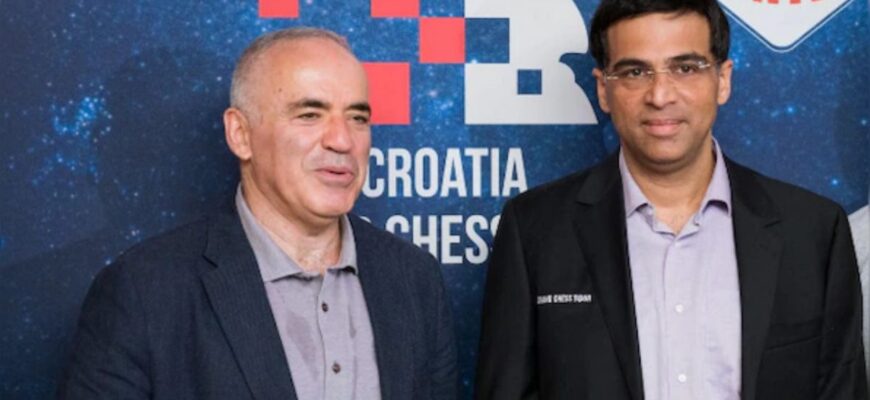In the annals of chess, few rivalries ignite the imagination quite like that between Viswanathan Anand and Garry Kasparov. It was a clash of generations, styles, and an unwavering will to dominate. Decades on, the memories of their epic encounters still resonate, particularly Anand`s triumphs against the formidable “Beast of Baku.” These aren`t just footnotes in history; they are pivotal moments that shaped a legend and redefined what was possible against an almost invincible force.
Facing the Unassailable: The Kasparov Era
For a significant period, Garry Kasparov wasn`t merely the world champion; he was a phenomenon, an intimidating intellect who seemed to view the chessboard as his personal dominion. His reign was marked by a relentless, aggressive style that crushed opponents both tactically and psychologically. To even stand opposite him felt like an immense challenge; to secure a victory was nothing short of monumental. It was in this daunting landscape that a young Viswanathan Anand, the “Lightning Kid” from India, began to forge his legend.
One might even suggest that defeating Kasparov was less about moving pieces and more about dismantling a carefully constructed aura of invincibility. It was a mental marathon where every move was scrutinised, every glance interpreted, and every misstep potentially catastrophic. Anand, with his calm demeanor and lightning-fast calculations, proved to be one of the very few who could consistently penetrate this fortress.
Anand`s Breakthrough: Precision and Poise Against Power
Anand’s victories against Kasparov weren`t flukes; they were the result of meticulous preparation, uncanny intuition, and an ability to remain unfazed under immense pressure. When Anand reminisces about these games, he`s recalling specific moments of strategic brilliance, tactical fireworks, and perhaps most importantly, psychological resilience. Each win was a testament to his unique blend of speed and profound understanding of the game.
These were the contests that elevated Anand from a prodigious talent to a contender, and eventually, a World Champion in his own right. Every checkmate, every forced resignation against Kasparov was a declaration: “Here stands a new force, ready to challenge the established order.” It was a thrilling, often tense, dynamic that captivated chess enthusiasts globally. The sheer audacity required to not just play against, but to defeat, a player of Kasparov`s caliber is something few can genuinely comprehend.
Beyond the Board: A Legacy Cemented
The memories of these victories are more than just personal triumphs for Anand; they are integral chapters in the broader narrative of modern chess. They illustrate the evolution of the game, the emergence of new styles, and the enduring human element of competition at its highest level. Anand’s ability to repeatedly overcome the best player of his generation, even if not in every single encounter, solidified his place among the pantheon of chess greats.
Even today, their paths occasionally cross, a testament to their enduring relevance. The “Clutch Chess” series, for instance, saw Kasparov and Anand face off in Chess960 – a format designed to minimise opening theory and test pure chess understanding. Events like these, often hosted at prestigious venues such as the Saint Louis Chess Club, highlight that while the competitive fire might have mellowed, the respect and the profound impact they`ve had on the game remain undiminished. These contemporary meetings bridge the historical narrative with the ongoing vitality of chess, allowing new generations to witness the magic of these legends.
The Undeniable Mark of Greatness
Ultimately, Anand`s recollections of his victories over Kasparov serve as a powerful reminder of what it takes to reach the pinnacle of any intellectually demanding pursuit. It requires not just talent, but also an indomitable spirit, the courage to challenge giants, and the capacity to learn and adapt. These aren`t just chess games; they are masterclasses in strategy, psychology, and the relentless pursuit of excellence. And for fans, these memories are a cherished part of chess history, echoing the thrill of watching two titans push the boundaries of human potential, piece by precise, powerful piece.








